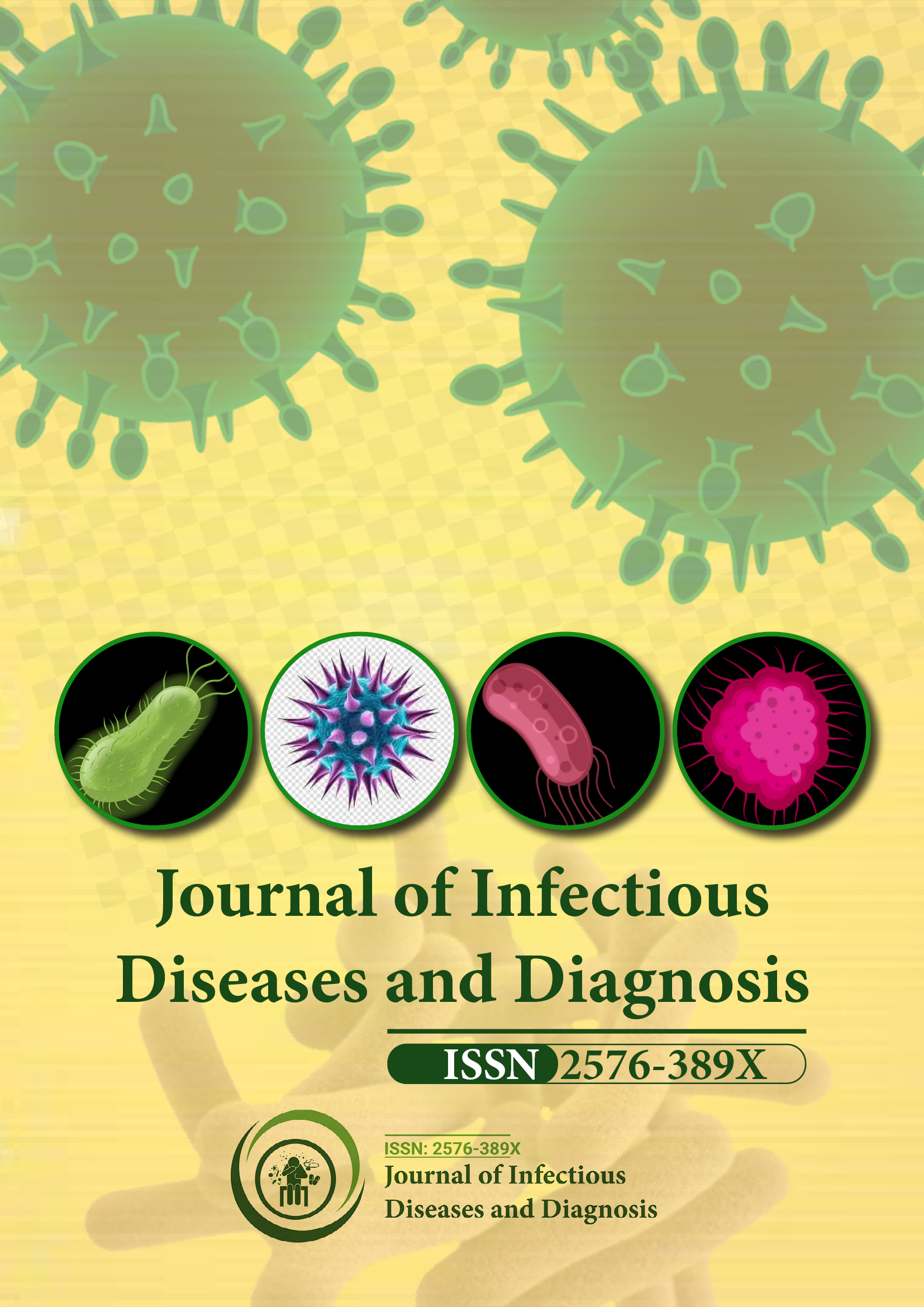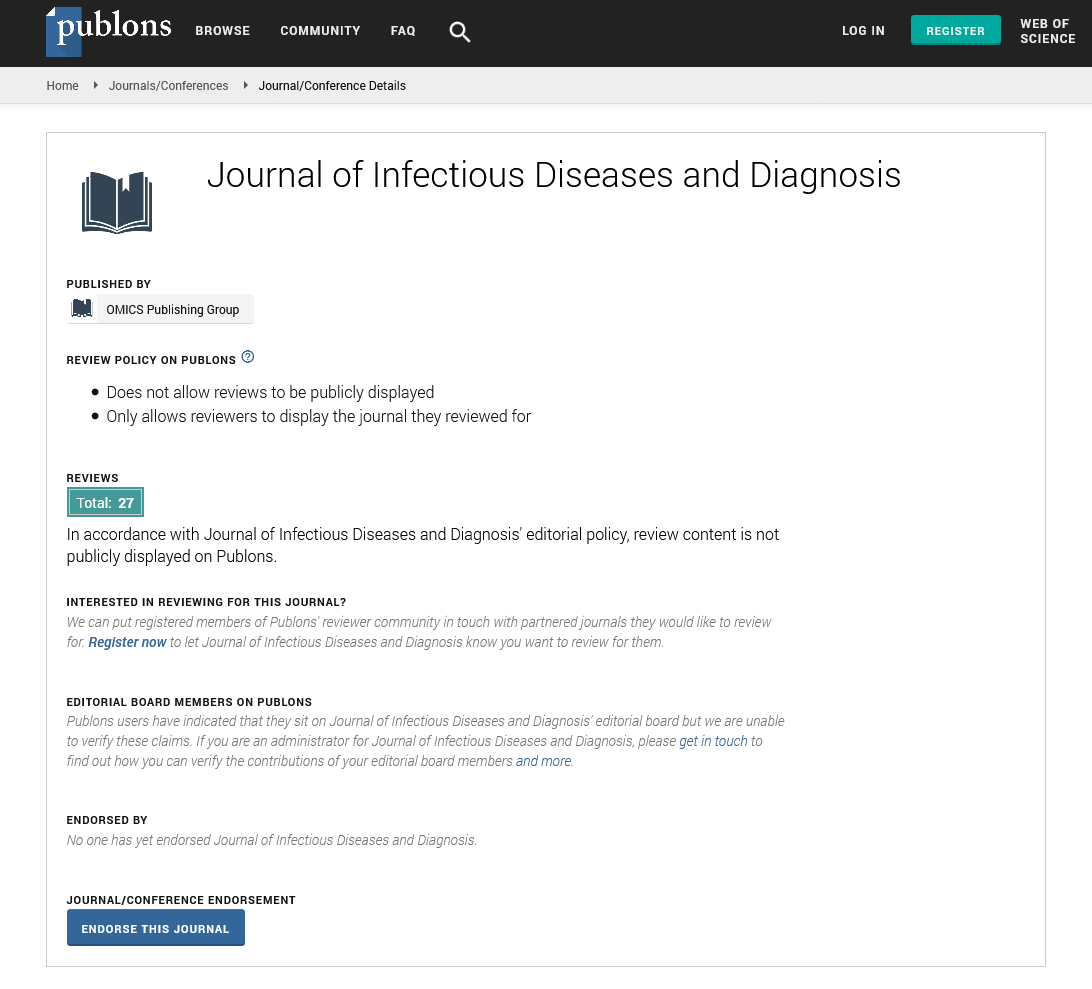Indexed In
- RefSeek
- Hamdard University
- EBSCO A-Z
- Publons
- Euro Pub
- Google Scholar
Useful Links
Share This Page
Journal Flyer

Open Access Journals
- Agri and Aquaculture
- Biochemistry
- Bioinformatics & Systems Biology
- Business & Management
- Chemistry
- Clinical Sciences
- Engineering
- Food & Nutrition
- General Science
- Genetics & Molecular Biology
- Immunology & Microbiology
- Medical Sciences
- Neuroscience & Psychology
- Nursing & Health Care
- Pharmaceutical Sciences
Perspective - (2025) Volume 10, Issue 1
Meningitis Diagnosis and Treatment: Clinical Practice Through Innovative Diagnostic Tools and Targeted Therapies
Paul Johnson*Received: 01-Jan-2025, Manuscript No. JIDD-25-28526; Editor assigned: 03-Jan-2025, Pre QC No. JIDD-25-28526 (PQ); Reviewed: 17-Jan-2025, QC No. JIDD-25-28526; Revised: 24-Jan-2025, Manuscript No. JIDD-25-28526 (R); Published: 31-Jan-2025, DOI: 10.35248/2576-389X.25.10.314
Description
Meningitis is a life-threatening inflammatory condition of the meninges, the protective membranes surrounding the brain and spinal cord. It can be caused by bacterial, viral, fungal, or parasitic infections, with bacterial meningitis being the most severe form. Despite advances in medical science, early diagnosis and effective treatment remain challenging due to the diverse causes, overlapping clinical presentations and limitations in laboratory testing.
Diagnostic challenges in meningitis
Meningitis presents with symptoms such as fever, headache, stiff neck, nausea, vomiting and altered mental status. However, these symptoms overlap with other neurological and infectious diseases, making early diagnosis difficult. In infants, elderly individuals and immunocompromised patients, classic symptoms may be absent, further complicating recognition.
Limitations of laboratory testing
Lumbar puncture and Cerebrospinal Fluid (CSF) analysis:
Lumbar puncture remains the gold standard for meningitis diagnosis, but obtaining CSF may be delayed due to contraindications such as raised intracranial pressure. CSF findings (elevated white blood cell count, high protein, low glucose) vary depending on the causative agent, sometimes leading to inconclusive results.
Delayed microbiological confirmation
Gram stain and culture are essential for identifying bacterial pathogens but require 24-48 hours for results. Polymerase Chain Reaction (PCR) and multiplex assays provide faster pathogen detection but may not be widely available in resource-limited settings. Blood cultures, though useful, may fail to detect the pathogen in some cases, especially if antibiotics have been administered before sample collection.
Distinguishing viral from bacterial meningitis
Bacterial meningitis requires immediate antibiotic treatment, whereas viral meningitis is often self-limiting. Biomarkers such as procalcitonin and C-reactive protein help differentiate between bacterial and viral infections, but they are not always definitive.
Challenges in resource-limited settings
Limited access to rapid diagnostic tools and advanced imaging techniques increases the risk of misdiagnosis. Delayed hospital visits due to lack of awareness or financial constraints contribute to poor outcomes.
Therapeutic strategies in meningitis management
Due to the urgency of bacterial meningitis, treatment is initiated before microbiological confirmation. Common empirical regimens include:
• Ampicillin+Cefotaxime or Gentamicin
• Ceftriaxone or Cefotaxime ± Vancomycin (if Streptococcus pneumoniae resistance is suspected)
• Ceftriaxone+Ampicillin+Vancomycin (to cover Listeria monocytogenes)
Targeted therapy based on pathogen identification
Once the causative organism is confirmed, therapy is adjusted accordingly:
• Streptococcus pneumoniae: Ceftriaxone or Cefotaxime ± Vancomycin
• Neisseria meningitidis: Ceftriaxone or Penicillin G
• Haemophilus influenzae: Ceftriaxone
• Listeria monocytogenes: Ampicillin ± Gentamicin
For viral meningitis, supportive care is provided and antiviral agents such as Acyclovir are used in cases of herpes simplex virus infection.
Adjunctive therapy
• Reduces inflammation and prevents neurological complications, particularly in bacterial meningitis caused by .
• Includes hydration, fever management and seizure control.
Prevention strategies
• Vaccination against , and significantly reduces bacterial meningitis incidence.
• Prophylactic antibiotics for close contacts of meningococcal meningitis cases help prevent outbreaks.
Conclusion
Meningitis remains a diagnostic and therapeutic challenge due to its diverse etiology and overlapping symptoms. Early recognition, rapid diagnostic tools and appropriate antimicrobial therapy are crucial for improving patient outcomes. Continued research and improved healthcare access are necessary to enhance diagnostic accuracy and treatment success worldwide.Citation: Johnson P (2025). Meningitis Diagnosis and Treatment: Clinical Practice Through Innovative Diagnostic Tools and Targeted Therapies. J Infect Dis Diagn. 10:314.
Copyright: © 2025 Johnson P. This is an open-access article distributed under the terms of the Creative Commons Attribution License, which permits unrestricted use, distribution and reproduction in any medium, provided the original author and source are credited.

